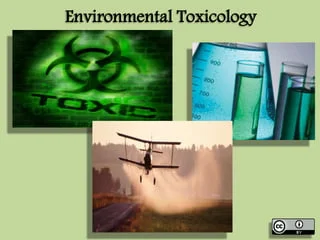Ph.D. in Crop and Soil Sciences: Environmental Toxicology: Introduction, Admission, Registration, Eligibility, Duration, Fees, Syllabus 2024

Introduction:
A Ph.D. in Crop and Soil Sciences with a focus on Environmental Toxicology delves into the intricate relationship between agricultural practices, environmental contaminants, and soil health. This guide navigates through the admission process, eligibility criteria, completion time, career prospects, syllabus overview, internship opportunities, scholarships, and FAQs relevant to aspiring scholars in this specialized field.
Admission Process:
- Research Programs: Identify universities offering Ph.D. programs in Crop and Soil Sciences with a concentration in Environmental Toxicology, emphasizing faculty expertise and research focus areas.
- Application Submission: Complete online applications, including transcripts, recommendation letters, statement of purpose, GRE scores (if required), and a research proposal highlighting your interest in environmental toxicology.
- Interviews: Shortlisted candidates may be invited for interviews to assess their research potential, academic background, and alignment with the program's objectives.
- Research Experience: Prior experience in environmental science, toxicology, agriculture, or related fields through internships, research projects, or publications can strengthen your application.
Eligibility:
- Educational Background: A master's degree in Crop Science, Soil Science, Environmental Science, Agricultural Science, or a related discipline from an accredited institution.
- Academic Performance: Strong academic record with a minimum GPA requirement, typically above 3.0 on a 4.0 scale.
- Research Experience: Demonstrated research experience through thesis work, publications, or presentations, preferably in environmental toxicology or related fields.
- Prerequisite Courses: Completion of undergraduate coursework in biology, chemistry, environmental science, and agricultural sciences may be required.
Completion Time:
Ph.D. programs in Crop and Soil Sciences with a focus on Environmental Toxicology usually take 4 to 6 years to complete, including coursework, comprehensive exams, dissertation research, and writing. However, completion times may vary based on research progress and individual circumstances.
Career Opportunities:
- Research Scientist: Conduct research in academic institutions, government agencies, or private sector organizations to assess the impact of environmental toxins on crops and soils, develop mitigation strategies, and promote sustainable agricultural practices.
- Environmental Consultant: Work with environmental consulting firms to assess soil and water contamination, evaluate risks to agricultural ecosystems, and provide recommendations for remediation and regulatory compliance.
- Regulatory Affairs Specialist: Assist government agencies or industry associations in developing policies, regulations, and guidelines to protect agricultural resources from environmental pollutants and ensure food safety.
- Agricultural Extension Agent: Collaborate with agricultural extension services to educate farmers and stakeholders on the hazards of environmental toxins, implement best management practices, and promote environmental stewardship.
- Academician: Pursue academic positions as professors or researchers in universities, teaching courses in environmental toxicology, crop and soil sciences, and conducting innovative research to address emerging environmental challenges.
Syllabus:
- Environmental Toxicology Principles: Study of the principles of environmental toxicology, including the fate, transport, and effects of contaminants on agricultural ecosystems.
- Soil Contaminants: Examination of common soil contaminants, such as heavy metals, pesticides, herbicides, and emerging pollutants, and their interactions with soil components.
- Crop Responses to Contaminants: Analysis of crop responses to environmental toxins, including physiological, biochemical, and molecular mechanisms of toxicity and tolerance.
- Risk Assessment and Management: Introduction to risk assessment methodologies, environmental monitoring techniques, and risk management strategies to mitigate the impact of contaminants on crops and soils.
- Dissertation Research: Independent research under the guidance of faculty advisors, focusing on a specific aspect of environmental toxicology in crop and soil sciences, leading to a dissertation.
Internship Opportunities:
- Government Agencies: Internships with environmental protection agencies, agricultural departments, or research institutes to gain hands-on experience in environmental monitoring, data analysis, and policy development.
- Industry Partnerships: Collaborations with agrochemical companies, environmental consulting firms, or agricultural research centers to conduct field studies, assess contaminant levels, and evaluate remediation techniques.
- Research Institutes: Internships at research institutions or think tanks specializing in environmental science and toxicology, assisting with laboratory experiments, sample analysis, and data interpretation.
- Agricultural Laboratories: Internships at agricultural laboratories or soil testing facilities, learning soil sampling techniques, chemical analysis methods, and interpretation of soil health indicators.
Scholarships and Grants:
- Institutional Funding: Universities may offer graduate assistantships, fellowships, or tuition waivers to Ph.D. students in Crop and Soil Sciences with a focus on Environmental Toxicology.
- Government Grants: Federal agencies, such as the Environmental Protection Agency (EPA) or the National Institutes of Health (NIH), may provide research grants for graduate students conducting studies on environmental toxicology.
- Industry Sponsorship: Agrochemical companies, agricultural associations, or environmental organizations may offer scholarships, fellowships, or research grants to support graduate studies in environmental toxicology.
- Professional Associations: Scientific societies, such as the Society of Environmental Toxicology and Chemistry (SETAC) or the Soil Science Society of America (SSSA), may offer scholarships and travel grants to graduate students conducting research in environmental sciences.
FAQs:
Can I pursue a Ph.D. in Crop and Soil Sciences with a background in environmental science?
Yes, candidates with a background in environmental science, toxicology, agriculture, or related fields are encouraged to apply and can leverage their expertise to explore interdisciplinary research opportunities.
What types of environmental toxins are studied in this program?
The program covers a wide range of environmental contaminants, including heavy metals, pesticides, herbicides, organic pollutants, and emerging contaminants, and their impact on soil health and crop productivity.
Are there opportunities for fieldwork and hands-on research experiences?
Yes, students have access to field research sites, agricultural laboratories, and environmental monitoring stations, allowing them to conduct fieldwork, collect samples, and analyze data under the supervision of faculty mentors.
How can I tailor my research focus within the Environmental Toxicology concentration?
Students can collaborate with faculty advisors to design research projects aligned with their interests, such as investigating the effects of specific contaminants on crop growth, soil microbial communities, or ecosystem functions.





